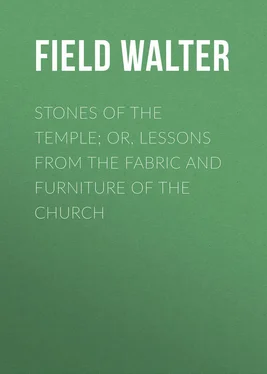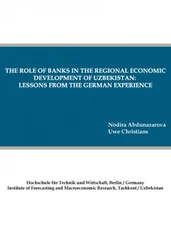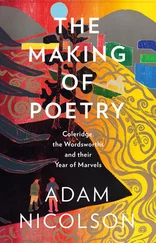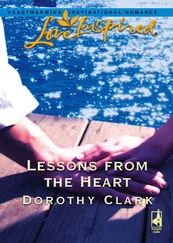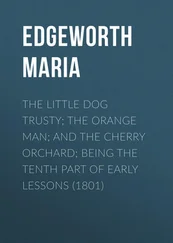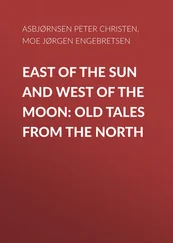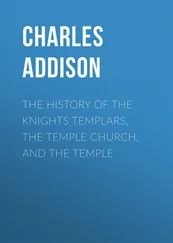The room may have been the residence of one or more of the ordinary priests of the church, or perhaps only a study for them (see previous note), or it may have been occupied by an anchorite or hermit, or by a chantry priest. Rooms for these several purposes are also not unfrequently to be found over the vestry, as at Cropredy, near Banbury, and at Staindrop, Durham.
Fire-places are of frequent occurrence in these chambers; many of them are coeval with the porch, but others appear to have been erected at a later date.
At Hawkhurst, Kent, the porch-chamber is called the treasury . At St. Mary Redcliffe, Bristol, the room over the grand north porch, in which are the remains of the chests in which Chatterton professed to find the manuscripts attributed to Rowley, was at one time known as the treasury house .
"The chamber over the porch was generally used for the keeping of books and records belonging to the church. Such an appendage was added to many churches in the fourteenth and fifteenth centuries; and some of these old libraries still remain with their books fastened to shelves or desks by small chains." — Brandon's Gothic Architecture.
Over the porch at Finedon (of which we give an engraving) is a parvise in which is contained a valuable library of about 1000 volumes, placed there by Sir John English Dolben, Bart., A.D. 1788. At St. Peter's-in-the-East, Oxford, and many other places, are similar libraries.
These were probably small chantries. It is comparatively seldom that any vestige of the altar remains; but the credence and piscina – certain proofs of the previous existence of the altar – are very commonly found.
"The custom of teaching children in the porch is of very early origin; it is distinctly mentioned by Matthew Paris in the time of Henry III." — Glossary of Architecture.
After the reigns of Henry VIII. and Edward VI., in which reigns all chantries were suppressed, the children were promoted from the porch to the parvise.
"Above the groining of the porch is a parvise, accessible by a turret-stair, having two Norman window-openings, unglazed, and a straight-gabled niche between them on the outside. In former days this chamber was constantly inhabited by one of the sextons, who acted as a watchman, but since the restoration of the church it has been disused." — Harston's Handbook of Sherborne Abbey.
In the church accounts of St. Peter's-in-the-East, Oxford, A.D. 1488, there is a charge for a "key to clerk's chamber." This no doubt referred to the parvise.
As, a few years ago, at Headcorn in Kent.
There was frequently, but not always, a window or opening from the room into the church; and it would seem that it was so placed to enable the occupant of the room to keep a watchful eye over the interior of the church, and not for any devotional exercise connected with the altar, as we never find this window directed obliquely to wards the altar, as is commonly the case with windows opening from the vestry, or chamber above the vestry, into the church.
Many porches seem originally not to have had doors, but marks exist which indicate that barriers to keep out cattle were used.
It is composed of lamp-black, bees'-wax, and tallow, and is commonly used by shoemakers to give a black polish to the heels of boots.
These superstitions existed a few years since in connexion with an old incised slab in the chancel of Christ Church, Caerleon.
"In the year 1657, the adherents of a Preacher of the name of Cam obtained the grant of the chancel of the Holy Trinity Church, Hull, from the council of state under the Protectorate, and whilst the mob without were burning the surplice and the Prayer Book, those within were tearing the brasses from the grave-stones." — History of Kingston-upon-Hull.
s. d.
"1644, April 8th, paid to Master Dowson, that came with the troopers to our church, about the taking down of images and brasses off stones
"1644, paid, that day, to others, for taking up the brasses of grave-stones before the Officer Dowson came
– Churchwarden's accounts ; Walberswich, Suffolk.
"This William Dowing (Dowson), it appears, kept a journal of his ecclesiastical exploits. With reference to the Church of St. Edward's, Cambridge, he says, —
"'1643, Jan. 1, Edward's Parish, we digged up the steps, and broke down 40 pictures, and took off ten superstitious inscriptions.'
"Mr. Cole, in his MSS., observes, —
"'From this last entry we may clearly see to whom we are obliged for the dismantling of almost all the grave-stones that had brasses on them, both in town and country; a sacrilegious, sanctified rascal, that was afraid, or too proud, to call it St. Edward's Church, but not ashamed to rob the dead of their honours, and the church of its ornaments. – W. C.'" — Burn's Parish Registers.
The very interesting brasses in Chartham Church, Kent, were found a few years since as here described, by the present rector, and replaced by him on the chancel pavement.
"Manual of Monumental Brasses," vol. i. p. 34.
"If any one will lay the portrait of Lord Bristol (in Mr. Gage Rokewode's Thingoe Hundred ) by the side of the sepulchral brass of the Abbess of Elstow (from whom he is collaterally descended) figured in Fisher's Bedfordshire Antiquities , he cannot but be struck by the strong likeness between the two faces. This is valuable evidence on the disputed point whether portraits were attempted in sepulchral brasses." — Notes and Queries.
See page 77.
See page 85. [The engravings of sepulchral brasses and of stained glass windows are kindly supplied by the Editor of the Penny Post .]
See page 67.
Hamlet , Act i. Sc. 3.
Monumental slabs of this description are most common on the pavement of churches in the midland counties.
